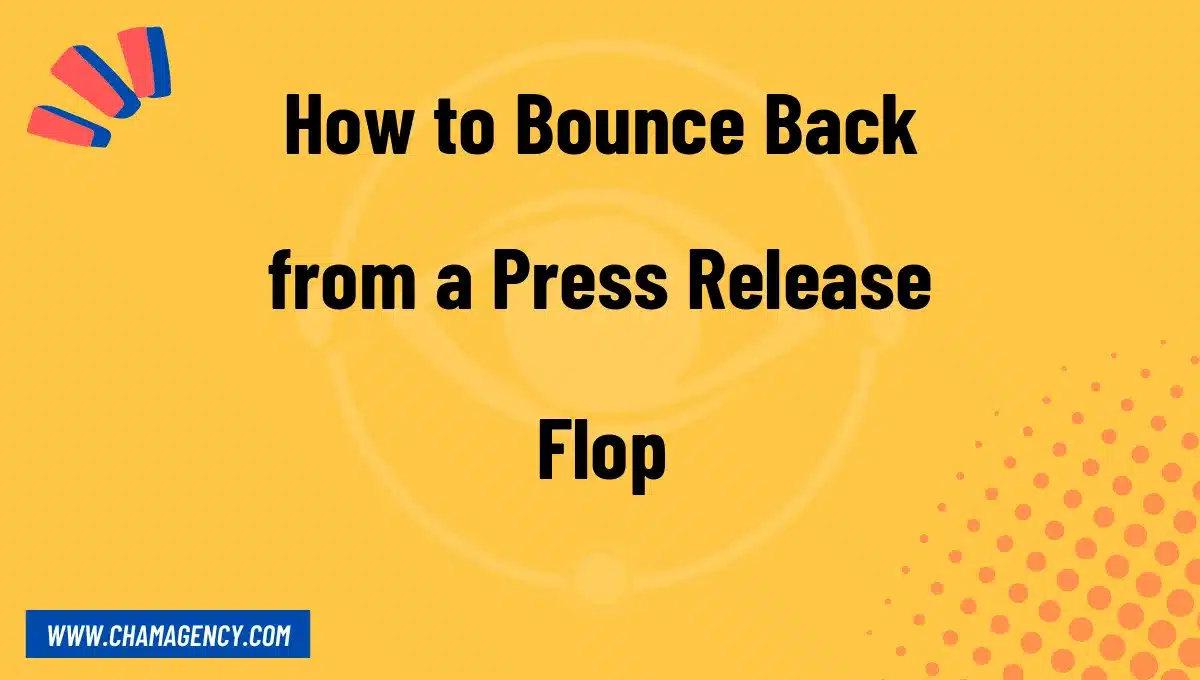Press releases are an essential tool in any marketing and public relations strategy. They help businesses communicate important news, updates, and announcements to the media and the public. However, sometimes even the best-laid plans can go awry, and a press release may not receive the attention or coverage expected. In such cases, it’s important to know how to bounce back and turn the situation around. This article will guide you through the steps to recover from a press release flop.
1. Assess the Situation
The first step in bouncing back from a press release flop is to assess the situation. Take a step back and analyze why the press release didn’t perform as expected. Was the timing off? Did the content fail to resonate with the target audience? Identifying the specific reasons will help you better understand what went wrong and how to fix it.
Once you have a clear understanding of the situation, brainstorm possible solutions and strategies to overcome the setback. This could involve revising the press release, adjusting the targeting, or exploring alternative distribution channels.
2. Revise and Repurpose
After identifying the shortcomings of the initial press release, it’s time to revise and repurpose the content. Take a closer look at the messaging, tone, and format of the release. Make necessary adjustments to better align with your audience’s interests and preferences.
Consider repurposing the content into different formats, such as blog posts, social media updates, or videos. This allows you to reach a wider audience and engage them in alternative ways. Remember to optimize the content for SEO by incorporating relevant keywords and meta tags.
3. Reach Out to Influencers and Journalists
An effective way to regain momentum after a press release flop is to enlist the help of influencers and journalists. Identify individuals or publications that cover topics related to your press release and reach out to them personally.
Craft personalized pitches that highlight the value and relevance of your revised press release. Offer exclusive insights or additional information that will make the story more appealing to journalists and influencers. Building relationships and securing media coverage can significantly boost the reach and credibility of your message.
4. Leverage Social Media and Online Communities
Social media platforms and online communities are powerful channels for spreading your message and generating buzz. Create engaging posts and updates that link to your revised press release. Encourage your followers to share the content and actively participate in the conversation.
Engaging with your audience in real-time allows you to address any concerns, answer questions, and provide additional context. Leverage the power of hashtags and relevant online communities to extend your reach and connect with like-minded individuals who may be interested in your press release.
5. Learn from the Experience
Finally, it’s essential to learn from the experience of a press release flop. Take the time to evaluate the success and failures of your entire communication strategy. Identify the lessons learned and incorporate them into future campaigns.
Consider seeking feedback from your audience and industry experts to gain different perspectives and insights. Use the knowledge gained to fine-tune your future press releases and ensure a higher success rate.
Conclusion
A press release flop can be disheartening, but it’s not the end of the world. By assessing the situation, revising and repurposing the content, reaching out to influencers and journalists, leveraging social media, and learning from the experience, you can bounce back successfully. Remember, no marketing strategy is foolproof, but how you handle setbacks and adapt will ultimately determine your success.





